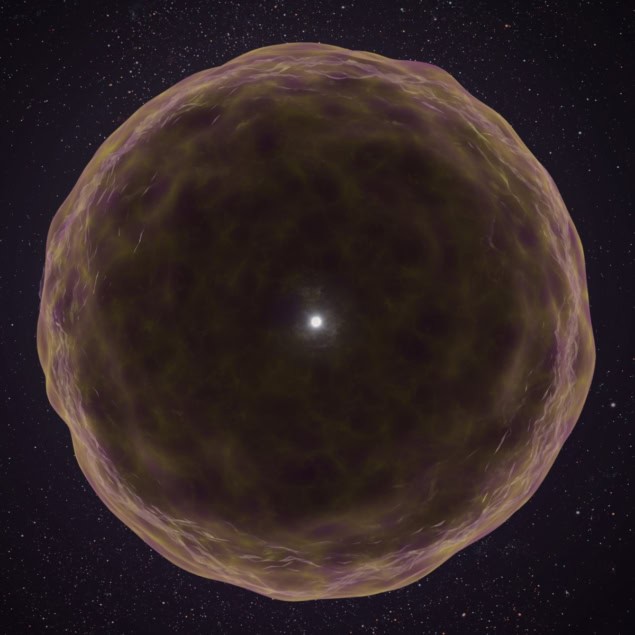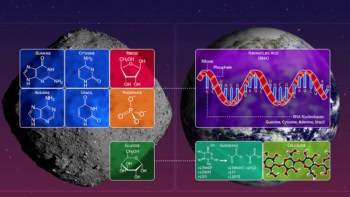
For the first time, astronomers have observed clear evidence for a heavily stripped star that has shed many of its outer layers before its death in a supernova explosion. Led by Steve Schulze at Northwestern University, the team has spotted the spectral signatures of heavier elements that are usually hidden deep within stellar interiors.
Inside a star, atomic nuclei fuse together to form heavier elements in a process called nucleosynthesis. This releases a vast amount of energy that offsets the crushing force of gravity.
As stars age, different elements are consumed and produced. “Observations and models of stars tell us that stars are enormous balls of hydrogen when they are born,” Schulze explains. “The temperature and density at the core are so high that hydrogen is fused into helium. Subsequently, helium fuses into carbon, and this process continues until iron is produced.”
Ageing stars are believed to have an onion-like structure, with a hydrogen outer shell enveloping deeper layers of successively heavier elements. Near the end of a star’s life, inner-shell elements including silicon, sulphur, and argon fuse to form a core of iron. Unlike lighter elements, iron does not release energy as it fuses, but instead consumes energy from its surroundings. As a result, the star can no longer withstand its own gravity and it will collapse rapidly in and then explode in a dramatic supernova.
Hidden elements
Rarely, astronomers can observe an old star that has blown out its outer layers before exploding. When the explosion finally occurs, heavier elements that are usually hidden within deeper shells create absorption lines in the supernova’s light spectrum, allowing astronomers to determine the compositions of these inner layers. So far, inner-layer elements as heavy as carbon and oxygen have been observed, but not direct evidence for elements in deeper layers.
Yet in 2021, a mysterious new observation was made by a programme of the Zwicky Transient Facility headed by Avishay Gal-Yam at the Weizmann Institute of Science in Israel. The team was scanning the sky for signs of infant supernovae at the very earliest stages following their initial explosion.
“On 7 September 2021 it was my duty to look for infant supernovae,” Schulze recounts. “We discovered SN 2021yfj due to its rapid increase in brightness. We immediately contacted Alex Filippenko’s group at the University of California Berkeley to ask whether they could obtain a spectrum of this supernova.”
When the results arrived, the team realised that the absorption lines in the supernova’s spectrum were unlike anything they had encountered previously. “We initially had no idea that most of the features in the spectrum were produced by silicon, sulphur, and argon,” Schulze continues. Gal-Yam took up the challenge of identifying the mysterious features in the spectrum.
Shortly before death
In the meantime, the researchers examined simultaneous observations of SN 2021yfj, made by a variety of ground- and space-based telescopes. When Gal-Yam’s analysis was complete, all of the team’s data confirmed the same result. “We had detected a supernova embedded in a shell of material rich in silicon, sulphur, and argon,” Schulze describes. “These elements are formed only shortly before a star dies, and are often hidden beneath other materials – therefore, they are inaccessible under normal circumstances.”

Exploding stars alone cannot account for rapid heavy-element production, study reveals
The result provided clear evidence that the star had been more heavily stripped back towards the end of its life than any other observed previously: shedding many of its outer layers before the final explosion.
“SN 2021yfj demonstrates that stars can die in far more extreme ways than previously imagined,” says Schulze. “It reveals that our understanding of how stars evolve and die is still not complete, despite billions of them having already been studied.” By studying their results, the team now hopes that astronomers can better understand the later stages of stellar evolution, and the processes leading up to these dramatic ends.
The research is described in Nature.



